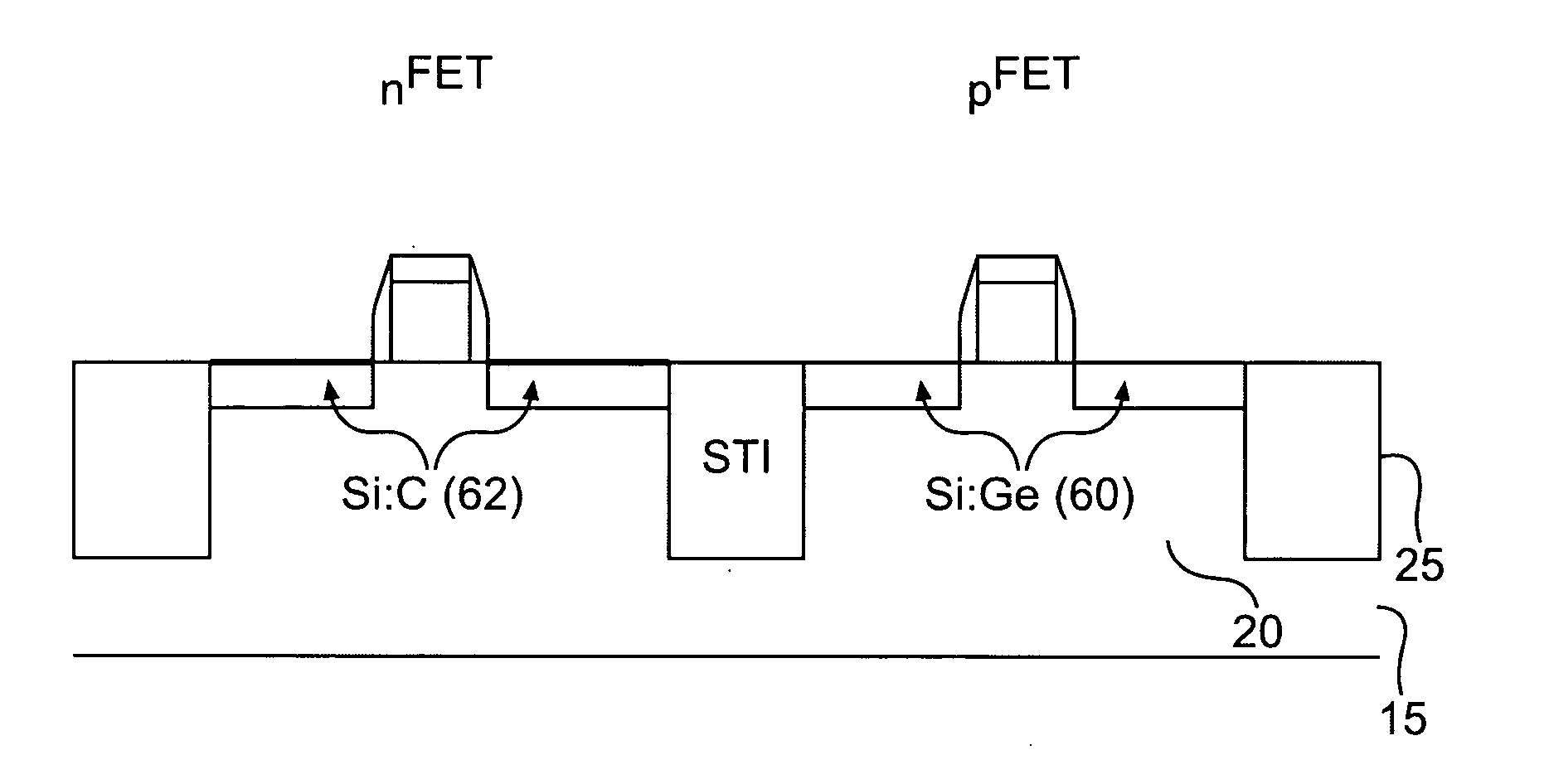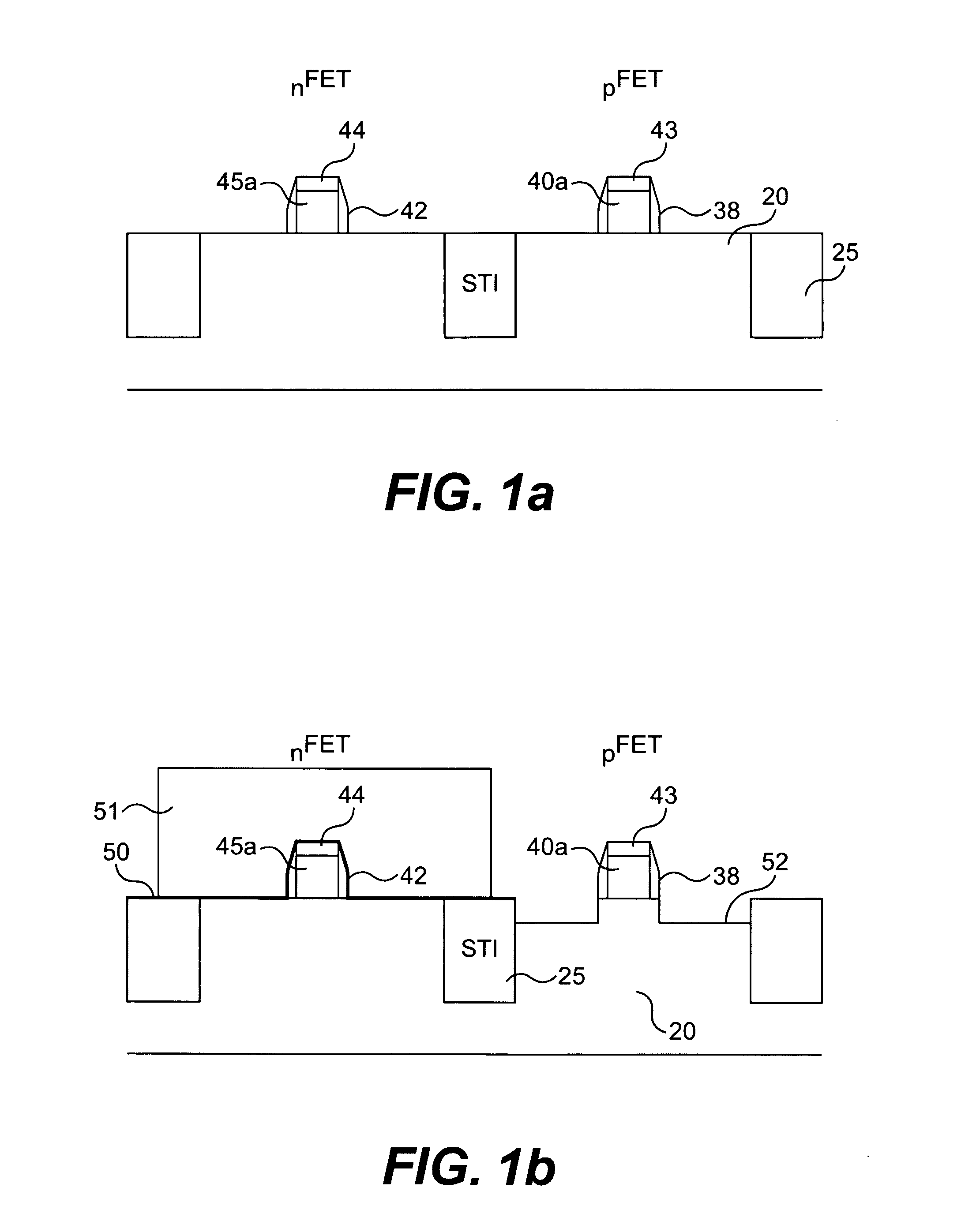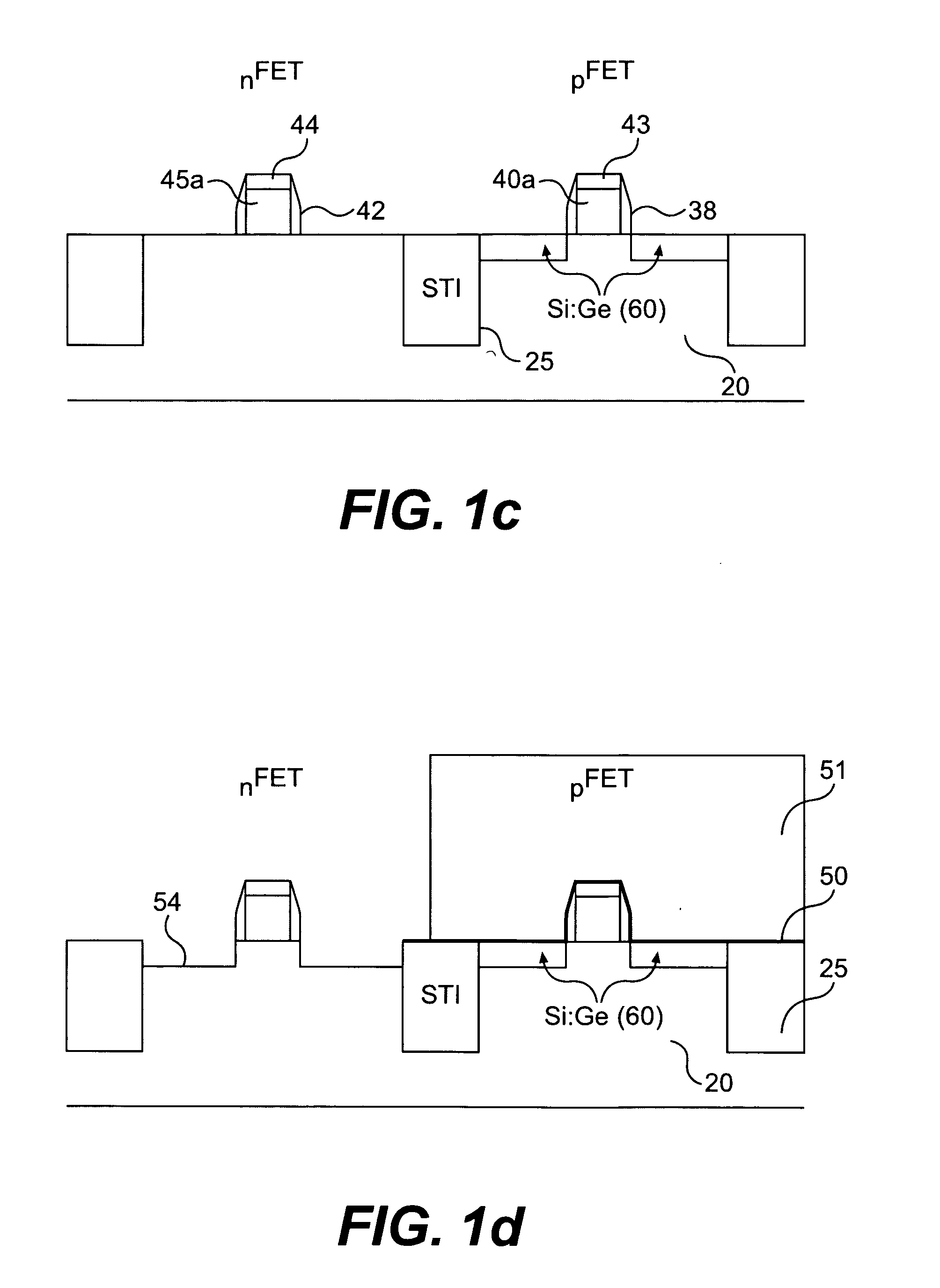High performance stress-enhanced MOSFETs using Si:C and SiGe epitaxial source/drain and method of manufacture
a technology of stress-enhanced mosfets and epitaxial sources, which is applied in the direction of semiconductor devices, electrical equipment, transistors, etc., can solve the problems of significant increase in manufacturing time and cost, thick graded sige buffer layer cannot be easily applicable to silicon-on-insulator substrates (soi), and the structure of the sige buffer layer is too thick
- Summary
- Abstract
- Description
- Claims
- Application Information
AI Technical Summary
Benefits of technology
Problems solved by technology
Method used
Image
Examples
Embodiment Construction
[0016] The invention is directed to a semiconductor device and method of manufacture which provides tensile stresses near the nFET channel and compressive stresses near the pFET channel of CMOS devices. In one embodiment of the invention, the longitudinal tensile stresses are brought very close to the nFET channel while at the same time compressive stresses are brought very close to the pFET channel. Additionally, in the invention, a process and structure is provided to integrate both SiGe and Si:C materials into CMOS technology.
[0017] By way of example, a highly tensile Si:C film is provided (e.g., embedded) in the silicon substrate in the source / drain (S / D) regions to longitudinally apply tension on the nFET structure in the channel under the gate region thereof. Similarly, a highly compressive SiGe film is provided (e.g., embedded) in the silicon substrate in the S / D regions to longitudinally apply compression on the pFET in the channel under the gate region thereof. Similar to ...
PUM
 Login to View More
Login to View More Abstract
Description
Claims
Application Information
 Login to View More
Login to View More - R&D
- Intellectual Property
- Life Sciences
- Materials
- Tech Scout
- Unparalleled Data Quality
- Higher Quality Content
- 60% Fewer Hallucinations
Browse by: Latest US Patents, China's latest patents, Technical Efficacy Thesaurus, Application Domain, Technology Topic, Popular Technical Reports.
© 2025 PatSnap. All rights reserved.Legal|Privacy policy|Modern Slavery Act Transparency Statement|Sitemap|About US| Contact US: help@patsnap.com



